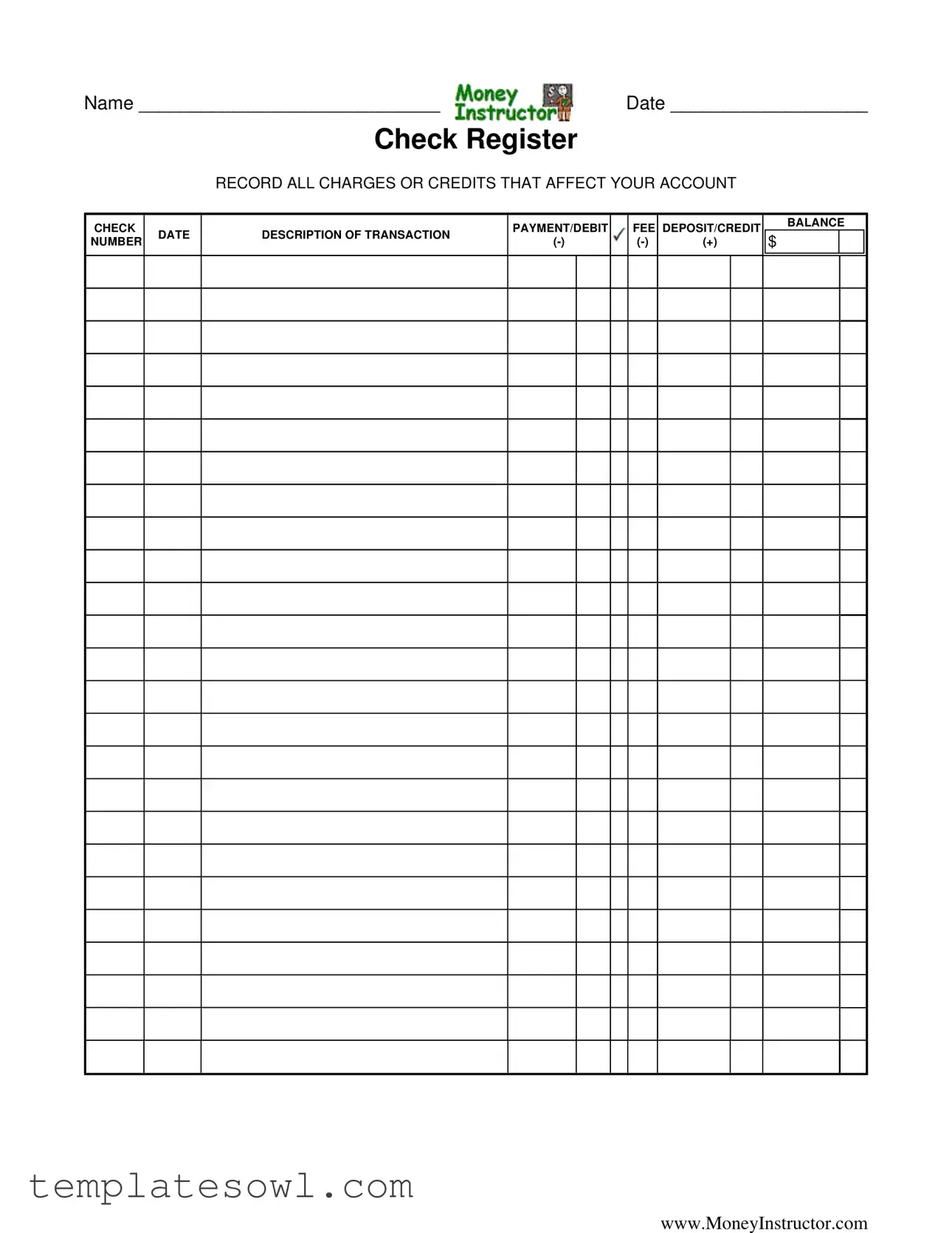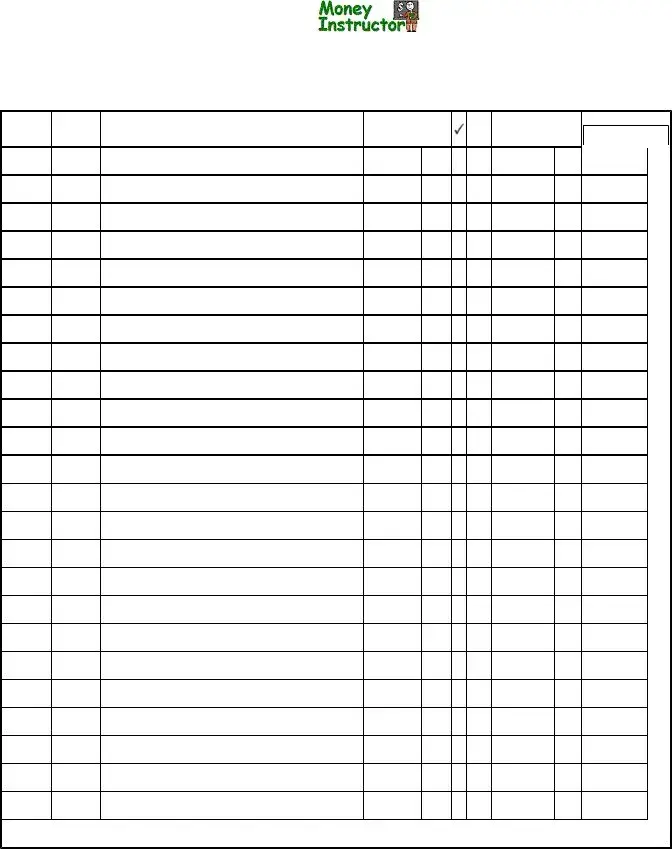What is the Money Instructor Check Register form used for?
The Money Instructor Check Register form is designed to help individuals track their bank account transactions. Users can log all charges or credits that affect their account, allowing for better management of finances. This tool helps maintain an accurate balance and keeps a record of spending and deposits.
How do I fill out the Check Register form?
To fill out the Check Register form, begin by entering your name and the date at the top. For each transaction, record the date it occurred, a brief description of the transaction, and the amount. If it’s a charge or debit, indicate this by writing the amount in the appropriate column with a minus sign. For deposits or credits, write the amount with a plus sign. Finally, calculate and update your account balance after each entry.
Why is it important to keep track of my account balance?
Tracking your account balance is essential for avoiding overdrafts and managing your spending. By regularly updating your check register, you gain a clearer picture of your finances. This vigilance can prevent fees that come from insufficient funds and help in planning your budget effectively.
Can I use the Check Register for types of accounts other than checking accounts?
Yes, the Check Register form can be used for any account where you need to track transactions—such as a savings account. While it is particularly designed for checking accounts, the principles of logging charges and credits are applicable to varying financial accounts, ensuring you manage your money effectively.
Where can I find the Money Instructor Check Register form?
The form is available on the official Money Instructor website at www.MoneyInstructor.com. You can download it for free and print it for your use. This accessibility allows anyone to take charge of their financial tracking without any cost.
Is there support available if I have questions about using the Check Register form?
Yes, support is available through the Money Instructor website. You can find additional resources, tutorials, and customer support options designed to assist users with any questions or issues they may have regarding the Check Register form or personal finance management in general.

